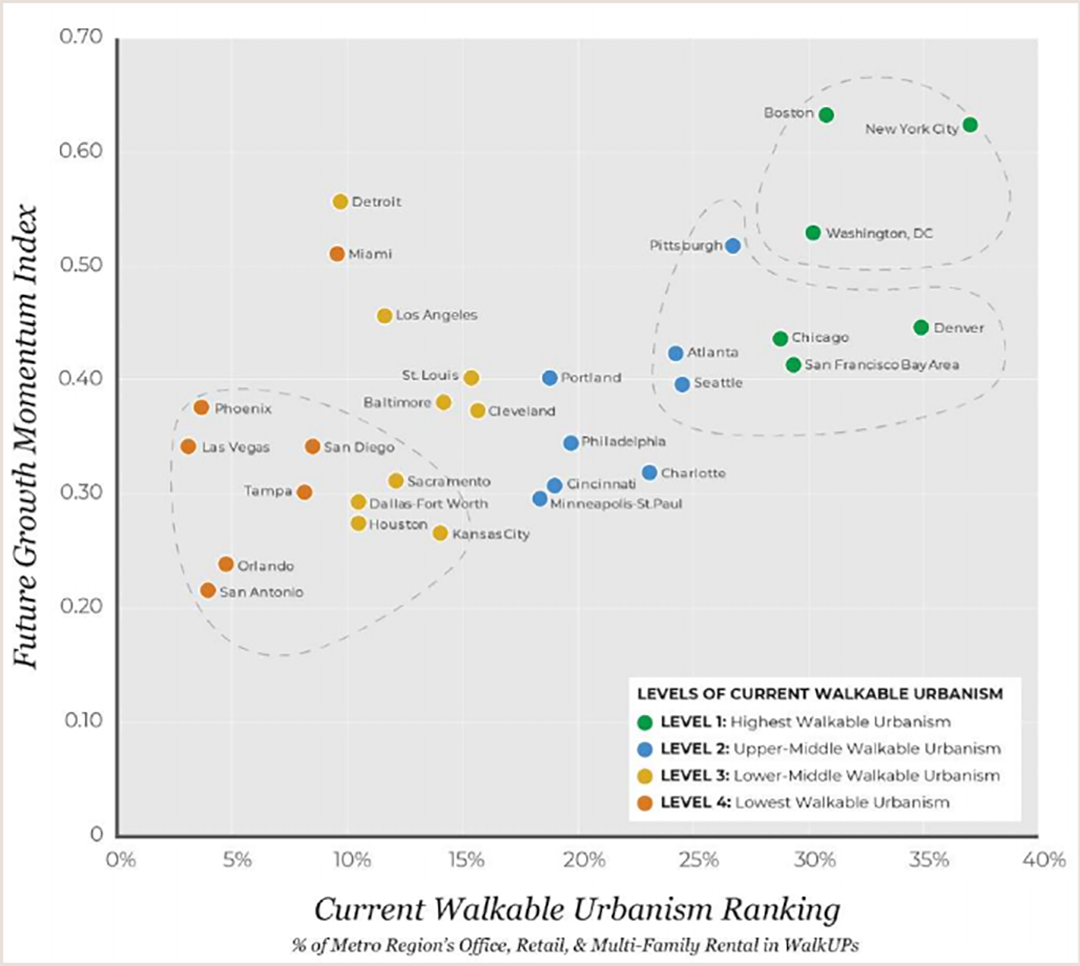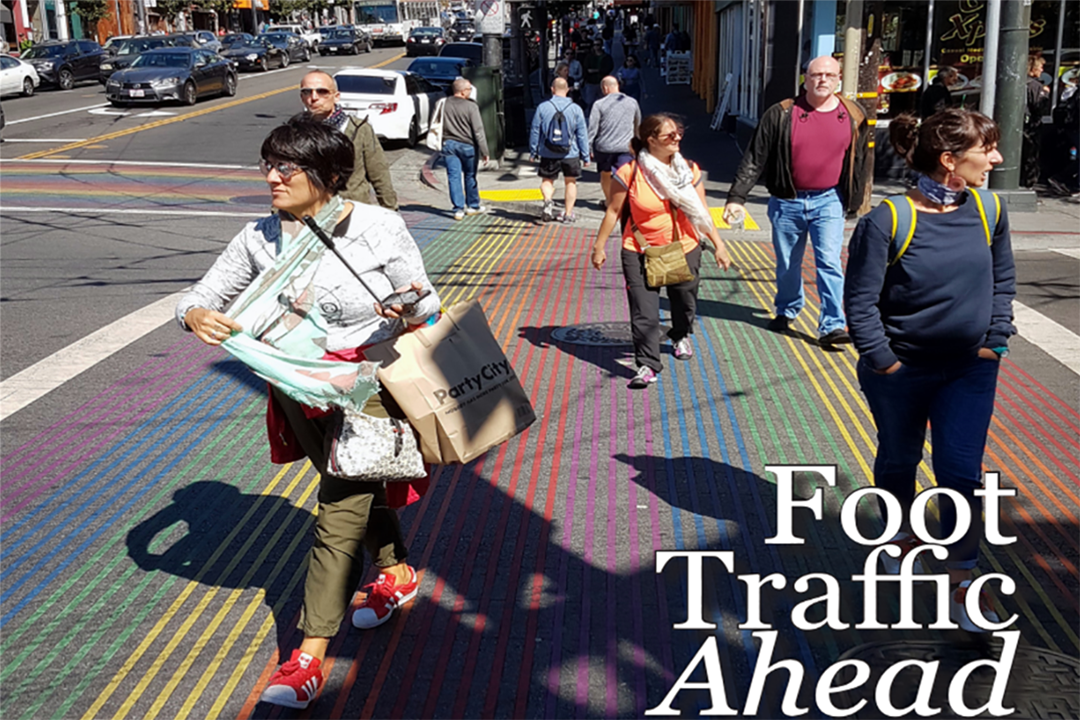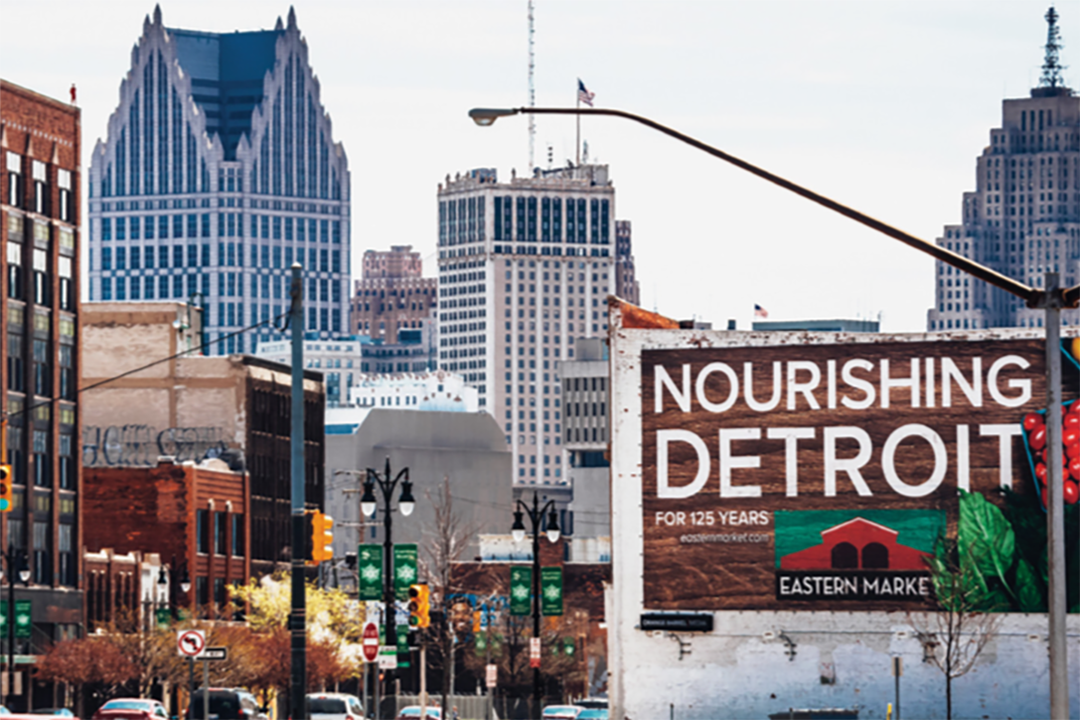By Briahnna Brown
In a biennial report that ranks the 30 largest metropolitan areas in the United States on their walkable urban real estate and places, Washington, D.C., is in fourth place behind New York, Boston and Denver.
Multiple factors contribute to D.C.’s ranking, including the high education level of the workforce in the District, George Washington University professor Christopher Leinberger said. He was a primary researcher for “Foot Traffic Ahead,” a report released in conjunction with the GW School of Business Center of Real Estate and Urban Analysis (CREUA)—as well as in partnership with Smart Growth America/LOCUS, Cushman & Wakefield and Yardi Matrix.
The report looks at the future of real estate development in urban areas and utilized Walk Score data in its analysis. Mr. Leinberger found that the increasing demand for new Walkable Urban Places, or WalkUPs, is reflected in skyrocketing housing prices in these areas, which could be cause for concern for those who live in or are seeking to live in areas, such as the 50 WalkUPs in the Washington, D.C., metro area.
He shared more of his findings with GW Today, including what the D.C. area will need to do to become more walkable, socially equitable and economically accessible:
Q: What exactly is walkability and how is it measured?
A: There are only two ways we build metro areas: drivable sub-urban (low density, segregated land uses and only cars/trucks for transportation) and walkable urban (higher density, a mix of uses and many ways to get to the place, including cars/trucks, transit, bikes and walking, but once there, everything is walkable). Walking distance has been defined as within a half mile for the 10,000 years we have been building cities, which makes walkable urban places compact and much less expensive to provide infrastructure. The easiest and most used measurement of walkability is WalkScore.com, which rates every address and neighborhood in the country on a 0 to 100 rating system; from 0 to 40 you need a car or truck for every trip from home or work, and over 70, the place is walkable.
Q: Why is walkability an important measurement?
A: It defines one of the only two ways of investing in the built environment. GW has found there is a relationship between Walk Scores above 70 and real estate values on a price-per-square-foot basis. A one Walk Score point increase over 70 in metro D.C. raises the value of a house or office building by between $5 to $20 per square foot, a huge increase that means walkable urban real estate is the most expensive in the country. Foot Traffic Ahead 2019 shows that office, retail and rental apartment rents are 75 percent per square foot higher than drivable sub-urban business parks, strip retail and apartment rents. Walkable urban housing prices are on average 90 percent per square foot higher. This demonstrates pent up demand for more walkable urban places to be built and the continued expansion of existing WalkUPs.

Washington, D.C., is among the current and future most walkable urban metros in the country, and has been since the Foot Traffic Ahead survey was first conducted in 2007. (Graph courtesy Foot Traffic Ahead)
Q: What factors contributed to the D.C. metro area’s ranking at number four?
A: Walkable urban places have been concentrating in knowledge economy metros, the future of the economy. Metro D.C. has the most educated workforce in the country (53 percent college educated compared to 33 percent for the country as a whole). We do not know the causal reason for this relationship between knowledge economy companies and their workers and walkable urban places, but it is highly correlated. In fact, being on the forefront of the knowledge economy is why metro D.C. GDP per capita is $75,535 compared to $63,728 for the largest 30 metros we studied. It is the main reason Amazon selected metro D.C. for HQ2. In fact, the Amazon criteria for its HQ2 (demanding walkable urbanism, rail transit, access to major airports but most importantly a highly educated workforce) is the economic development criteria of the future for most corporate relocations.
Q: What would the D.C. metro area need to do to become more walkable?
A: There are 50 WalkUPs (economically significant walkable urban places) in metro D.C., only using 1 percent of the metro land mass. However, 62 percent of the net growth in occupancy between 2010 and 2018 of office, retail and rental apartments went to these 50 WalkUPs. Only about 20 of these 50 WalkUPs have aggressive "place management,” a relatively new field that GW trains our students for. It means engaging in clean and safe programs for the WalkUP, economic development, investing and managing parks and parking, among many other services.
All 50 should have place management, so 30 more need to create these organizations and all of them should be far more aggressive and expansive in their mission. This should include more effort for affordable housing, economic development and workforce training. National Landing (formerly Crystal City) won Amazon HQ2 for investing in workforce training ($1 billion for the Virginia Tech Innovation Center), affordable housing and investment in transit and walking infrastructure. This is a national model to be followed.
Q: What does walkability mean for the future of the area’s housing market?
A: Walkable urban housing (within WalkUPs or surrounding neighborhoods) is the most expensive in the region and getting more expensive on a price per square foot basis. If you own, you win. If you rent, you lose.
Q: Should current or potential residents be concerned?
A: Yes, if they rent but no if they own because the number one reason walkable urban housing prices and rents are skyrocketing is the lack of supply. The 1 percent of the land that comprises the 50 WalkUPs, plus the 1 percent of the land in the region that are walkable urban bedroom communities (Cleveland Park, Petworth, etc.) are the only places where walkable urban development can occur. It is illegal due to zoning and Not in My Back Yard (NIMBY) opposition for it to be in the other 98 percent of the region's land. This has increased land prices to silly and artificial levels.
We need to “upzone” another 3 to 5 percent of the region to allow for higher density walkable urban development, especially for residential. In addition, it should be legal to rent out empty bedrooms, usually making design changes for access and egress, for "granny flats," which are great affordable housing. Once again, local zoning makes this illegal in most jurisdictions.



